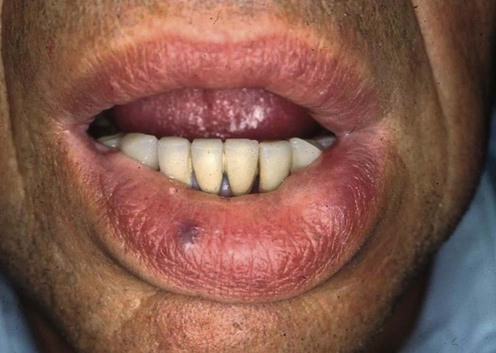Therapy for HAE is dependent on three considerations: Patients with HAE should all wear a MedicAlert disk stating the diagnosis and emergency treatment.
Hereditary angioedema

Management strategy
 Relief of acute angioedema, especially preservation of the airway
Relief of acute angioedema, especially preservation of the airway
 Prevention of relapse due to dental and surgical interventions
Prevention of relapse due to dental and surgical interventions
Prevention of relapse due to dental and surgical interventions
Acute Angioedema
First-line therapies





 C1-INH concentrate
C1-INH concentrate

